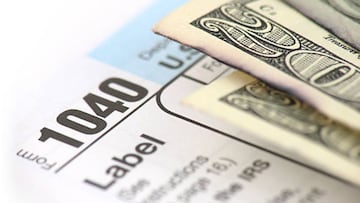Why are tax return refund amounts in 2024 less than in 2023? IRS filing season statistics
The IRS has reported that the refunds they’ve issued early in the tax season have been lower compared to a similar period in 2023. Why the smaller amount?

The 2024 tax season is in full swing, with the Internal Revenue Service receiving and processing returns for the 2023 tax year.
Taxpayers have until April 15 to file their return and pay applicable taxes in order to receive their tax refund. However, they may receive less money this year.
IRS refunds are lower in 2024 so far
Filers are receiving smaller tax refunds so far in 2024, according to a statistical report shared by the IRS.
The average refund issued through Feb. 2 this year was $1,395. Last year around this time, refunds averaged $1,963. Those released by direct deposit averaged $2,056 in 2023, and this year it only amounted to $1,543. What accounts for this decrease?
Less seven days of data
The statistics released by the IRS show data through Feb. 2. Less data has been taken into account for the initial numbers this year, since the tax season began on January 29. Last year, it began on January 23, and the numbers released ran through Feb. 3.
By Feb. 2, 2024 the IRS had issued only 2.6 million refunds, while during the period covered by last year’s report, it had already processed almost 8 million.
The tax agency cautions against making generalizations about the entire 2024 tax season this early.
“Considering the loss of seven days in this comparison, the filing season statistics show a good start to the 2024 filing season, with all systems working well,” according to the tax agency.
READ ALSO: Claiming Child Tax Credit can delay your refund
Higher wages, more part-time work
As for the reasons for the lower amounts, Daniel Rahill, a certified public accountant in Chicago, told USA Today that it could be because some workers received pay raises in 2023 but did not increase the tax withheld from their salary.
He also cited the possibility that workers earned more income from side hustles last year but did not increase their estimated tax payments, thus generating lower refunds.
However, the IRS has yet to share more information on this matter.
READ ALSO: What days of the week are tax refunds sent?
How long does it take for tax refunds to arrive?
The IRS says it can take up to 21 days to send refunds. Those who filed their return electronically and chose direct deposit as a payment method are the most likely to receive the money earlier.
Those who did not file electronically or chose a paper check as a payment method, may receive their refund in six to 12 weeks after sending their return.
A tax question: Why did I get a refund and an underpayment penalty? https://t.co/cXrsg2ejmG https://t.co/cXrsg2ejmG
— The Wall Street Journal (@WSJ) February 17, 2024
How you can track your tax refund
To check the status of your refund, you can use the “Where’s my refund?” tool on the IRS official website.
Related stories
Thanks to this, you will be able to track your payment 24 hours after an electronically filed tax return is processed.
You can also check the status of your payment through the IRS2Go mobile application, where you can track your refund payment 24 hours after the IRS receives the electronic return or in about four weeks if you filed your return on paper.


Complete your personal details to comment